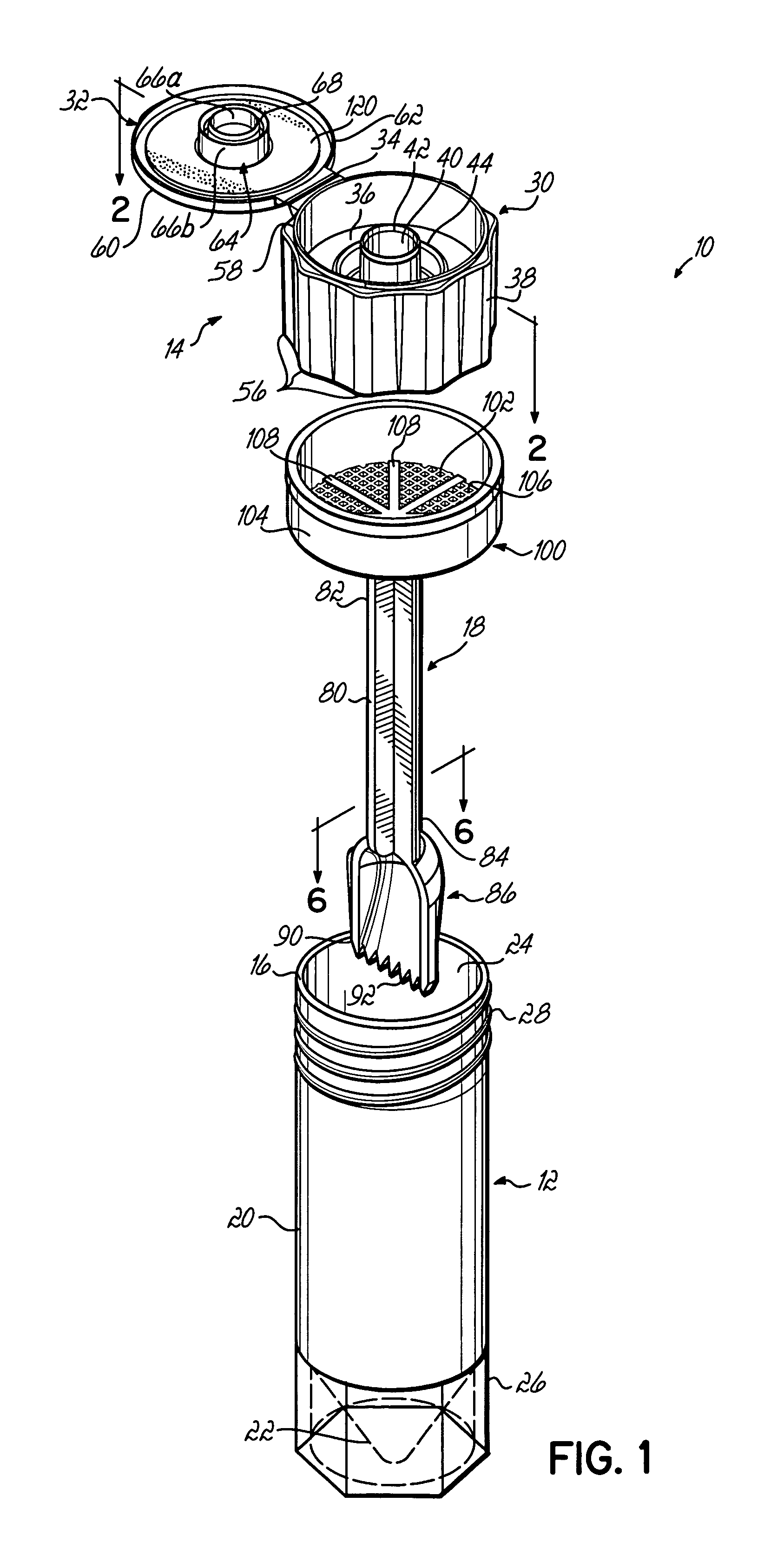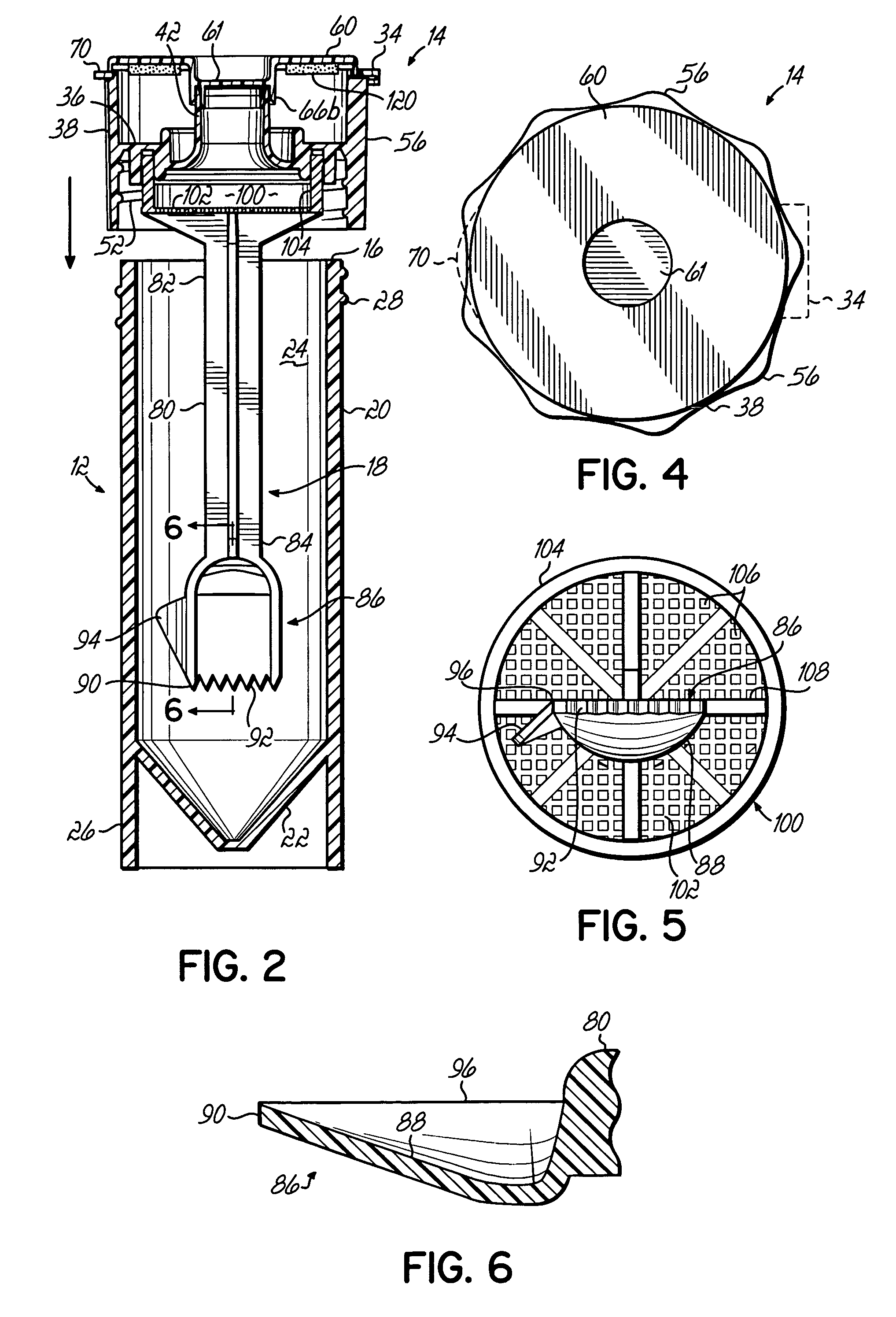Specimen collection system
a technology for collecting devices and specimens, applied in the field of specimen collection devices, can solve the problems of inability to handle prior closures, and inability to collect specimens in time to inadvertently contact users, so as to facilitate collection and preparation of specimens, the effect of minimizing the exposure of specimens and odors
- Summary
- Abstract
- Description
- Claims
- Application Information
AI Technical Summary
Benefits of technology
Problems solved by technology
Method used
Image
Examples
Embodiment Construction
[0028]Referring to FIG. 1, there is shown an exemplary specimen collection and transport system 10 according to the present invention. The collection and transport system 10 includes a container 12, a closure 14 selectively removably coupled to the container 12 proximate an open end 16 thereof, and a sample collection member 18 coupled to the closure 14 and disposed within the container 12 when the closure 14 is coupled to the open end 16 of the container 12. With continued reference to FIG. 1, and referring further to FIG. 2, the exemplary container 12 has a generally tubular shape defined by an elongate sidewall 20 extending from the first, open end 16 to a second, closed end 22. The sidewall 20 defines an interior reservoir 24 of the container 12, accessible through the first, open end 16. In the embodiment shown, the second, closed end 22 of the container 12 has a generally conical shape for accommodating the sample collection member 18, as will be described in more detail below...
PUM
 Login to View More
Login to View More Abstract
Description
Claims
Application Information
 Login to View More
Login to View More - R&D
- Intellectual Property
- Life Sciences
- Materials
- Tech Scout
- Unparalleled Data Quality
- Higher Quality Content
- 60% Fewer Hallucinations
Browse by: Latest US Patents, China's latest patents, Technical Efficacy Thesaurus, Application Domain, Technology Topic, Popular Technical Reports.
© 2025 PatSnap. All rights reserved.Legal|Privacy policy|Modern Slavery Act Transparency Statement|Sitemap|About US| Contact US: help@patsnap.com



